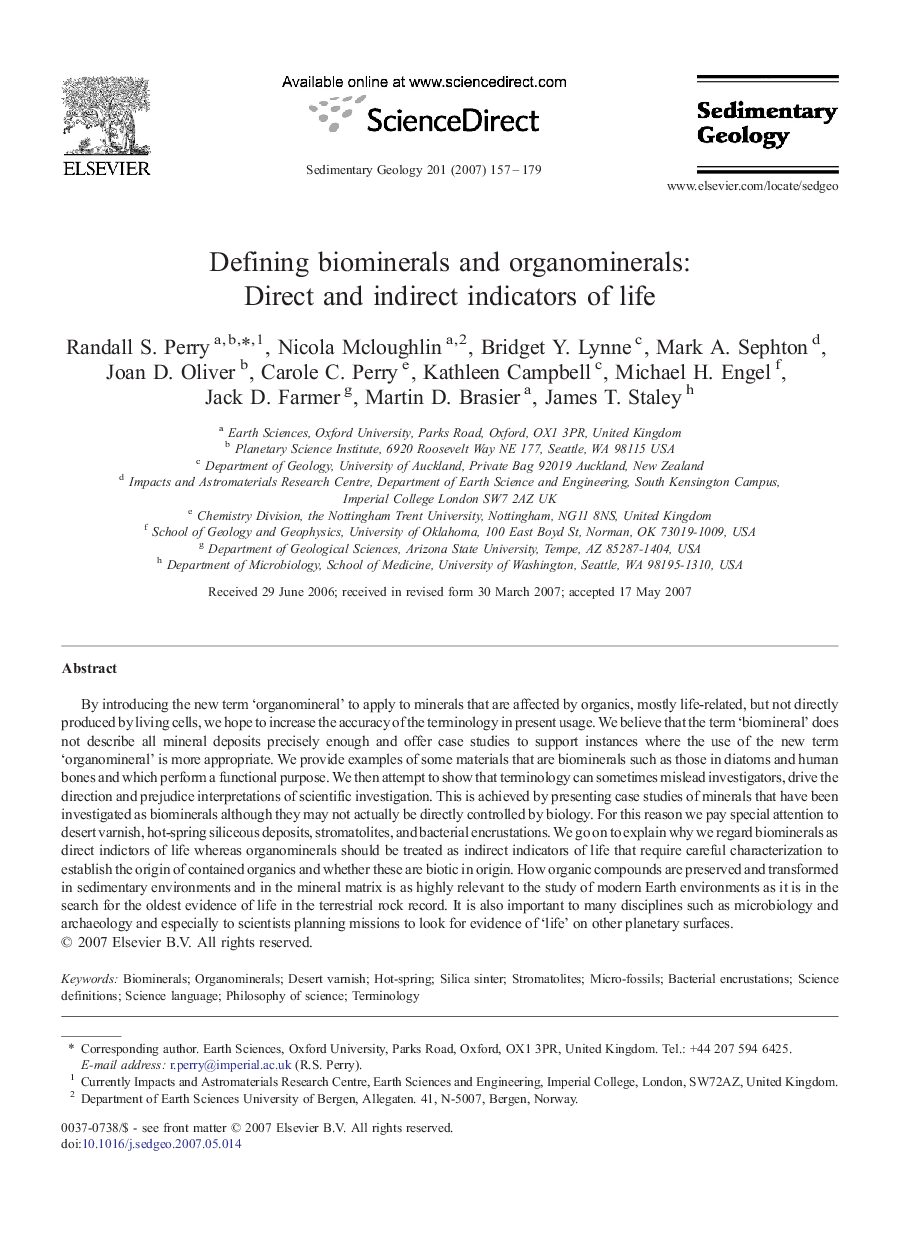| Article ID | Journal | Published Year | Pages | File Type |
|---|---|---|---|---|
| 4690783 | Sedimentary Geology | 2007 | 23 Pages |
By introducing the new term ‘organomineral’ to apply to minerals that are affected by organics, mostly life-related, but not directly produced by living cells, we hope to increase the accuracy of the terminology in present usage. We believe that the term ‘biomineral’ does not describe all mineral deposits precisely enough and offer case studies to support instances where the use of the new term ‘organomineral’ is more appropriate. We provide examples of some materials that are biominerals such as those in diatoms and human bones and which perform a functional purpose. We then attempt to show that terminology can sometimes mislead investigators, drive the direction and prejudice interpretations of scientific investigation. This is achieved by presenting case studies of minerals that have been investigated as biominerals although they may not actually be directly controlled by biology. For this reason we pay special attention to desert varnish, hot-spring siliceous deposits, stromatolites, and bacterial encrustations. We go on to explain why we regard biominerals as direct indictors of life whereas organominerals should be treated as indirect indicators of life that require careful characterization to establish the origin of contained organics and whether these are biotic in origin. How organic compounds are preserved and transformed in sedimentary environments and in the mineral matrix is as highly relevant to the study of modern Earth environments as it is in the search for the oldest evidence of life in the terrestrial rock record. It is also important to many disciplines such as microbiology and archaeology and especially to scientists planning missions to look for evidence of ‘life’ on other planetary surfaces.
